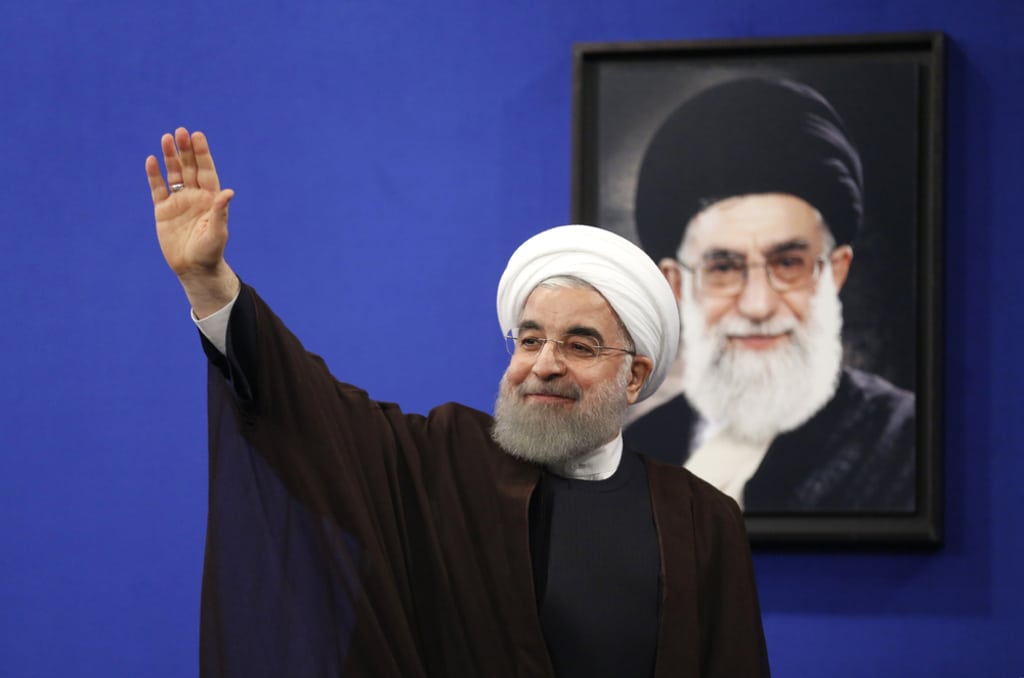
Presidential elections in Iran are generally heated affairs. Hassan Rouhani‘s decisive re-election in May 2017 was a major victory for the moderate vote and a blow to Supreme Leader Ali Khamenei. Yet three months in to Rouhani’s second term, many of those who voted for him are wondering what has happened to his campaign promises.
In the months leading up to the election, the strained relations between the supreme leader and president noticeably deteriorated. In his message at Iranian New Year in March 2017, Khamenei berated the government for its poor economic record. Three weeks before the election, he criticized Rouhani for the nuclear deal agreed in 2015 with the P5+1 group of world powers and denied its significance for the country.
In May 2017, hardliners condemned Rouhani for signing the 2030 Agenda for Sustainable Development, a non-binding UNESCO guideline that targets education standards, which they believed had ‘unIslamic’ implications for Iran’s general education. The supreme leader once again weighed in, denouncing the agenda and the government‘s approval of it. Indirectly, these protests were an attempt by the supreme leader and his supporters, especially the powerful Islamic Revolutionary Guards Corps (IRGC) whose stated role is to protect the Islamic Republic System, to weaken Rouhani and bolster his main rival, the ultra-conservative cleric Ebrahim Raisi.
Rouhani abruptly changed tack, transforming his strategy what had previously been a lack-lustre campaign into an offensive and inspiring one. He adopted a reformist discourse and promised more civil, cultural and political liberties and rights for minorities. The strategy proved remarkably effective and he was re-elected in a landslide.
His win only served to further strain relations with the supreme leader, who refused to congratulate him. In the subsequent two months, the war of words continued. On 7 June 2017, Iranians were shocked when Islamic State gunmen stormed the parliament building and mausoleum of Ayatollah Khomeini, Khamenei’s predecessor. However, the supreme leader virtually ignored the events and focused on a pre-scheduled speech criticizing the government’s cultural policies.
“Sometimes the central think tanks and cultural and political institutions fall into disarray and stagnation, and when that happens, commanders of the soft war should recognize their duty, make decisions and act in a fire at will form,” he said.
The comments unleashed a political storm, seeming as they did to give hardliners the green light to undermine the president any time they believed his policies deviated from the ‘true revolutionary path’. The spat even spilled over on to social media, with both men posting provocative and antagonistic videos of each other on Instagram.
In mid-July 2017, the war of words came to an abrupt end when Rouhani’s brother Hossein Fereydoun was imprisoned for corruption. He was released a few days later, but the incident was viewed as a turning point for Rouhani. Although corruption is widespread in Iran, the fact that the president’s brother could be charged sent a clear message.
Three weeks later, when the new cabinet was sworn in, many of Rouhani’s supporters were surprised and disappointed by his choice of ministers and the fact that women, minorities and reformist politicians were not appointed to key posts. Many feared he had abandoned his campaign promises for social reforms, possibly under pressure from hardliners. It is unclear if this is a short-term tactic or a long-term strategy. The change of tactic to reduce tension with the hardliners in the short term, or the shift of a lang-term strategy to sustain a cordial relationship with the Supreme Leader.
Notable, however, was the appointment of Amir Hatami, a general in the Iranian army, as the new defence minister. Since the end of the Iran-Iraq War in 1989, this key position has always been filled by a member of the IRGC. Moreover, the government has increased pressure on the IRGC to reduce its stranglehold on the economy. Reports suggest that several IRGC guards and affiliated businessmen have been arrested in recent months, while others have been forced to return their wealth that was obtained through illegal means. But taking on the IRGC is no easy task, and it is one that the government cannot accomplish alone: the supreme leader and judiciary also have to cooperate.
In early September 2017, the new cabinet announced its first major economic policy. It included lowering interest rates, which many believe should have been done long ago. For years, high interest rates have undermined economic growth and stifled investments. Although many economists consider the move a step in the right direction, Rouhani is under pressure to deliver an economic revival. Yet it is not clear how far the supreme leader is willing to go to facilitate this before he alienates his most important state allies.
Although most of Rouhani’s second term still lies ahead of him, the first three months have been a mixed bag. While his cabinet choices have disappointed millions of his supporters, he has challenged the influence of the IRGC and the supreme leader and taken several bold steps to constitute a new balance of power. It is too early to predict where these steps will lead, but one thing is certain: Rouhani may have won the vote but he faces a tough road ahead.


